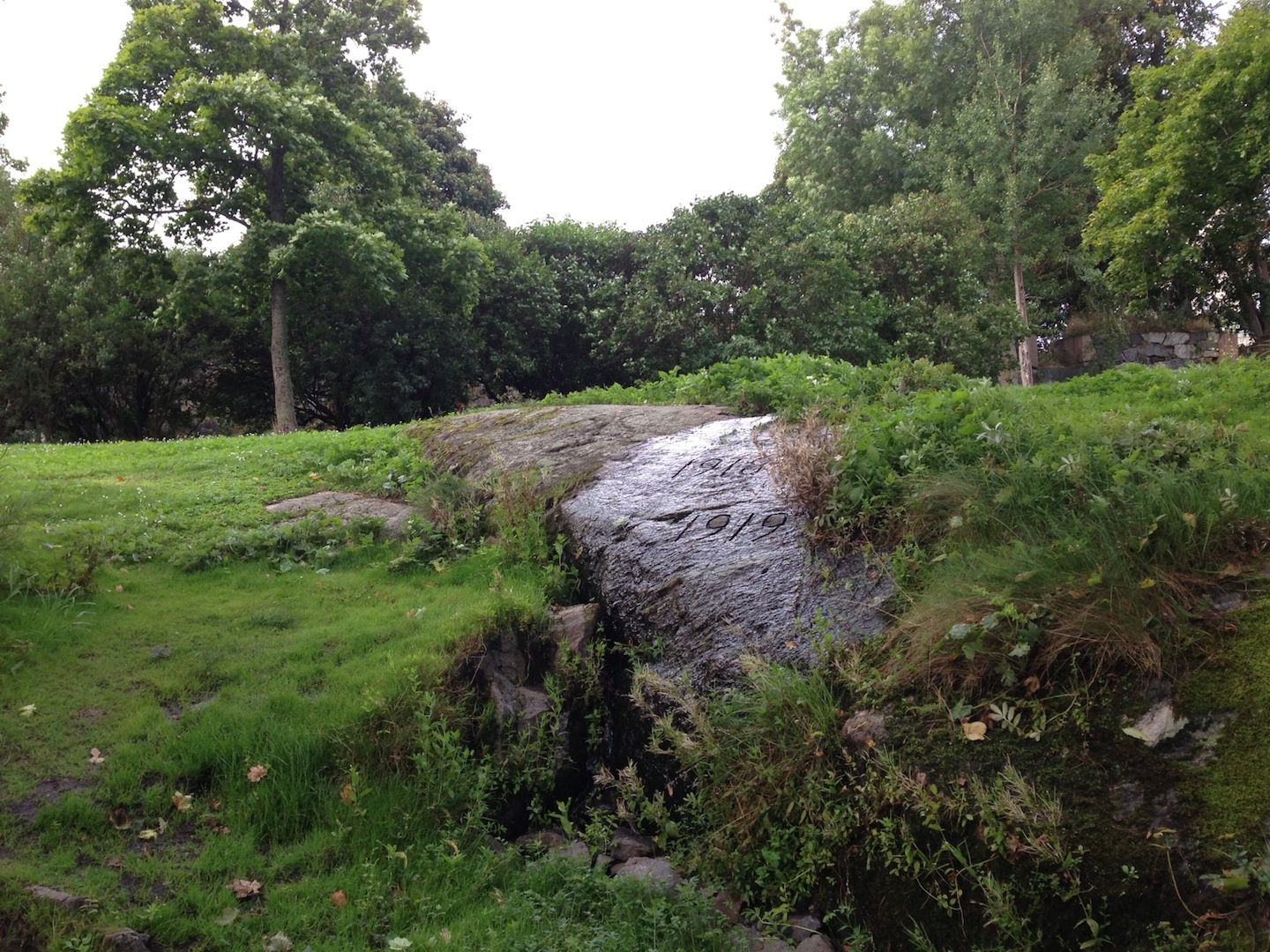This morning the breakfast room of the Suomenlinna hostel was filled with 28 more or less tired faces. Some of us had stayed up late celebrating the birthdays of two of our participants, while some of us watched as the newly published blog post disappeared in front of our eyes.
We got the first lesson of the day right after we left the hostel: history repeats itself. The ferry to Helsinki city was also disappearing in front of our eyes, less than 8 hours after the previous incident. However, we turned this into our favor and used the extra 20 minutes to scout for a memorial dedicated to people who lost their lives in the prisoner camp of Suomenlinna during the Finnish Civil War. The war which took place in 1918 was fought between the socialists – so-called reds – and the non-socialists – so-called whites. The memorial we were looking for (and finally managed to find) is dedicated to the reds who died at the Suomenlinna camp and consists of a plain rock with a small waterfall and two carved dates: 1918/1919.
We reached Ressu upper secondary school – our destination in Helsinki – at 9.30 and started working in groups, dealing with the situation in the participants’ home countries before, during and after WWI. At noon we took a break from our work and enjoyed a Finnish school lunch on veggie day. We had the same type of meal that every student in the same building was entitled to. In Finland the school lunch is free from the first grade until the end of upper secondary – at the university we have the right to a subsidised meal and pay about two euros ourselves.
From the broader perspective of the morning sessions we zoomed in on Finland in the afternoon, as we were accompanied by two Finnish experts. History teacher Hanna Kokkonen made sure to fill everyone in on the basic outline of the Finnish Civil War and provided the foundation for the presentation by Markus Ahlfors, her colleague in teaching. Ahlfors’ presentation dealt with multiple topics, such as the impact of naming the war. There are at least seven ways to refer to the Finnish Civil War and each one of them inspires a different interpretation of the events. During the first decades after the Civil War the official name was the Liberation War – suggesting that the war was all about sovereignty and liberation from Russia (of which Finland had been a part since 1809), whereas in reality, Finns were fighting against other Finns and the country had gained independence in 1917.
Ahlfors also spoke about the sensitive issue of memorials dedicated to the defeated side. Usually the construction of these monuments would be met with resistance, to say the least. In the cases that they were completed successfully, they were usually located somewhere secluded and hard to find. The tiny memorial for the prisoners who died at Suomenlinna is a prime example, and it is fitting that we ended our day at Ressu the same way it started.
Once we got back after having a pizza dinner (which didn’t quite measure up to the gourmet-grade salmon of last night) we sat back to watch the first part of Under the North Star, a filmatisation of a novel by the Finnish author Väinö Linna, dealing with the events directly preceding the outbreak of the Civil War.
Tomorrow we go hands-on by visiting Tampere, a city that turned out to be very significant for the outcome of the war. How? Find out tomorrow!






Pingback: La experiencia de la Academia en Helsinki (2013) | Eustory | Concurso de historias para jóvenes